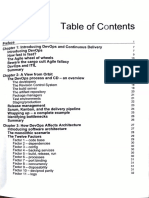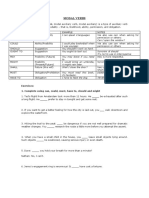UNIT I – Foundations, SDLC & Agile Models
1. Explain the Agile Development Model—including the principles of Agile
development and the four values of the Agile Manifesto
2. Define “agility” in software development: why it is required and what its phases are.
3. [From DevOps Unit 1 in the “Important Questions” set] Explain in detail about the
Agile Development Model with a neat diagram.
4. [From DevOps Unit 1] DevOps and ITIL are not mutually exclusive. Justify your
answer.
5. [From DevOps Unit 1] Explain the DevOps Continuous Delivery Pipeline in detail.
6. [From DevOps Unit 1] List and explain the different possible cases for bottlenecks in
a CI/CD process.
7. [From DevOps Unit 1] With an example, explain a complete DevOps process.
────────────────────────────
UNIT II – DevOps Fundamentals, Architectures, and Testing
10. What are the benefits of adopting DevOps, and how does the DevOps ecosystem (or
delivery pipeline) look? Illustrate your answer with a diagram.
11. Describe the various real-time use cases for DevOps and explain why DevOps is needed
in such scenarios.
12. [From DevOps Unit 2 in the “Important Questions” set] Explain the DevOps lifecycle for
Business Agility.
13. [From DevOps Unit 2] Discuss the role and impact of continuous testing in DevOps.
16. [From DevOps Unit 2] Explain in detail about microservices architecture using a neat
diagram.
────────────────────────────
UNIT III – Source Code Management and Tools
19. [Exam-level question] Write a short note on a DevOps tool (for example, on Monit or
Jenkins) and discuss useful plugins in Jenkins.
20. How is source code control handled in a DevOps environment? Illustrate the need for
source code management and its benefits for project collaboration.
21. [From DevOps Unit 3 in the “Important Questions” set] Explain how source code
management is useful for different roles (developers, testers, release managers) in DevOps.
22. [From DevOps Unit 3] Describe the process of migrating between different source code
management systems. è Git commands
25. [From DevOps Unit 3] Discuss the pull request model in the context of collaborative
development.
────────────────────────────
UNIT IV – Continuous Integration, Delivery, and Build Automation
27. What are the reasons to implement Continuous Integration (CI) and Continuous
Delivery/Deployment (CD) in a DevOps process, and what benefits do they bring?
28. How do you implement Continuous Integration in a DevOps environment?
29. Provide use cases for UI testing and explain how it integrates into a DevOps pipeline.
30. What metrics can be used to optimize the DevOps CI/CD pipeline?
31. [Exam-level question] Describe Continuous Delivery and list some popular tools for it.
32. [From DevOps Unit 4 in the “Important Questions” set – Short Answer] List the different
build systems available today and explain how Jenkins is used to create builds.
33. [From DevOps Unit 4] Discuss build slaves, triggers, job chaining, and build pipelines in
�Jenkins.
34. [From DevOps Unit 4 – Essay-type] Explain the role of build systems in automating
software builds, how to manage build dependencies and file system layout, and compare
alternative build servers (e.g., Bamboo, TeamCity, CircleCI) with Jenkins.
35. [From DevOps Unit 4 – Essay-type] Discuss the importance of collecting and analyzing
quality metrics (like code coverage and static analysis) during the build process.
────────────────────────────
UNIT V – Version Control, DevOps Maturity, and Process Assessment
36. How is version control managed in a DevOps environment? Provide an example that
illustrates its practical implementation.
37. What parameters should be measured at every stage of the DevOps Maturity
Model?
38. Explain the factors used in DevOps Maturity Assessment and discuss the merits and
demerits of a DevOps Maturity Model.
39. Illustrate a complete DevOps maturity model (for example, one operating on three
levels) with relevant examples.
40. [Optional/Additional] Write a short note on either the “Measured” stage or the “Nascent”
stage of a DevOps Maturity Model, or explain key factors for assessing maturity.
────────────────────────────
Class Test –1 (From Q1-set1 and Q1-set2 Documents)
41. Using Git commands, execute the following scenario:
a. Configure your user in the Git client.
b. Pull the latest changes from the remote repository.
c. Commit a file named {your_name}.txt with the commit message “{your name}
committing this change for term test 1”.
d. Discard changes in the file {your_sir_name}.txt from the working directory.
e. Push a file named {your_sap_id}.txt to your remote repository.
42. Draw the CI/CD lifecycle and describe, step by step, how to deploy a web service
application on the cloud (using, for example, the GitHub project
at https://github.com/MicrosoftDocs/pipelines-dotnet-core .NET). (Assume you create a
resource group as {your_name}-RG and a web app as {name_Sapid}.)
43. Explain all the events in a sprint in complete detail using a flow diagram.
– Alternatively, explain how you would handle a scrum team member who refuses to
participate in sprint planning because they consider it a waste of time.
































































































